As we gear up (or perhaps start to relax(?)) for the Christmas period we thought a brief look at how things were 60 years ago, in December 1962, might be of some interest. This is courtesy of that once well-loved Chesterfield institution, the yearly TP Wood’s Almanac.
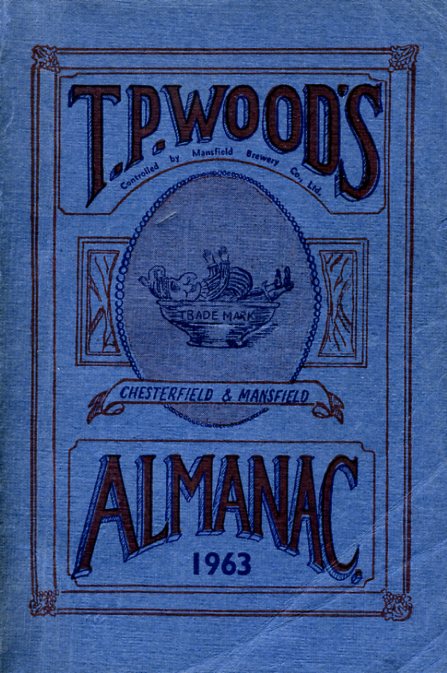
Time to get your almanac
It’s around this time of the year that customers of TP Wood & Co. (by that time part of the Mansfield Brewery Co.) would hopefully pick up their complimentary copies from Wood’s premises on the Market Place (which actually extended up to and including the King & Miller public house on Knifesmithgate). The attractive pillared building on the Market Place of TP Wood was sadly demolished some years ago and replaced by Littlewoods – now Primark.
We’d welcome information on just how widespread distribution of the almanac was. For example, was it available in all Mansfield public houses across the district? Did you have to ask for one, or was it freely available from the bar in each establishment?
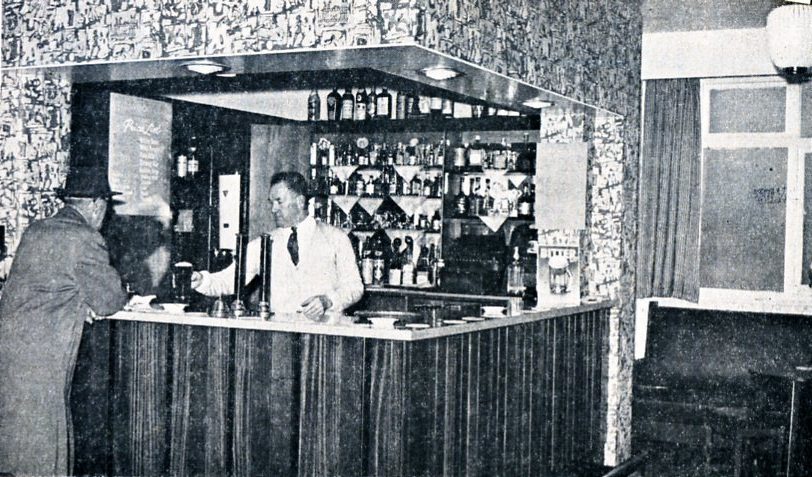

A well-loved feature of the almanacs was the ‘local chronicle’ which listed events in Chesterfield chronologically. Latterly these events were taken from the Derbyshire Times. In addition to the chronicle there would be short articles on other issues. For example the almanac for 1963 carried descriptions (and two pictures) of the fire at Chesterfield Parish Church, which had occurred on December 22nd 1961; boundary changes; a hurricane which occurred in February 1962 and news from the Mansfield Brewery itself. There were also cocktail recipes, national news snippets and a Mansfield chronicle.
Extracts for December 1962 from the local chronicle
The 6th December was an important date in Chesterfield’s redevelopment plans as proposals were announced for a completely new look for the town centre which would include ‘a new road pattern for the main shopping area, which would cost £4½ million and turn the centre into virtually “one big departmental store.’
Apparently, the new plans showed a modern pedestrian shopping area between High Street and New Beetwell Street, spelling ‘the end of the ancient Shambles, the present Market Hall, and the narrow streets between Low Pavement and High Street’.
(The plans were always controversial, though some thought they signalled the start of a new and revitalised Chesterfield. The rest, as they say, is history!)
A day later it was reported that scores of rabbit bodies had been found on Beeley Moor – the victims of myxomatosis. This was accompanied by rumours that the disease had been introduced intentionally.
(At this time there was considerable debate on how rabbits, which it was argued were thought to be causing extensive crop damage, should be controlled. One suggestion was to deliberately introduce myxomatosis, which killed the animals).
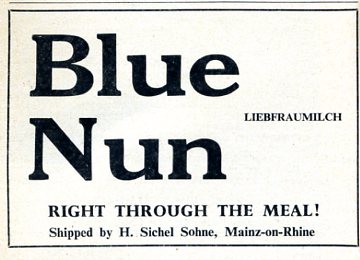
December 8th saw Whittington Hall Hospital Nurses’ Training School celebrating its 21st birthday with a 100 per cent pass list in that year’s national psychiatric nursing examinations. The then well-known Derbyshire farmer and TV personality Ted Moult presented the successful candidates with their prizes.
On 11 December an 18-century public house, The Bagshawe Arms, situated in Norton (then still in Derbyshire), was sold to Yates Bros. Wine Lodges Ltd for £45,000. ‘The pub was one of the few remaining free houses in North Derbyshire. The sale was held on the instruction of Mrs. B. M. W. Isherwood-Bagshawe and included over an acre of land which could be used for enlarging and developing the property.’
A day later an electrical fault in a window display was believed to have caused a serious fire at the Chesterfield Road, Dronfield store of E. Henson & Co. ‘Hundreds of television sets, tape recorders, washing machines and electrical appliances were destroyed during a five-hour blaze at a [their] Dronfield store.’
On December 14th the Red Lion at Ashover was the venue for a retirement presentation for Dr John R. Graham. He had been the Medical Officer of Health at Chesterfield Rural District Council, Staveley Urban District Council, Clay Cross Urban Council and Dronfield Urban Council.
As a reminder of how local companies would generally celebrate Christmas with employees, the annual dinner-dance of Wilfred Edmunds Ltd., Chesterfield, then proprietors of The Derbyshire Times, was held on the 21st December.
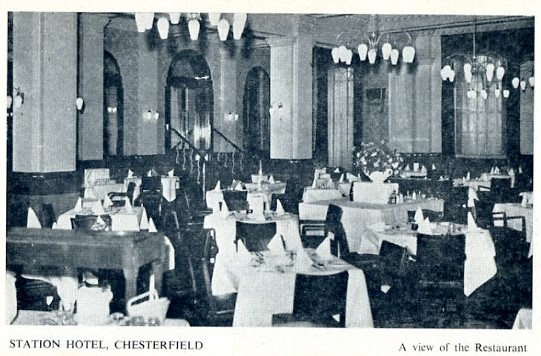
Christmas Eve saw the retirement of Miss G. McCormack after 44 years uninterrupted service as a teacher at St. Mary’s R.C. Primary School, Chesterfield.
Near the end of the year – on December 28th – there’s a mention of someone who was to play an increasingly important role in local politics – Dennis Skinner. At the conclusion of Clay Cross Urban District Council’s (UDC) General Purposes Committee, the chairman ‘congratulated Councillor Dennis Skinner on his efforts on behalf of a Clay Cross miner, Mr. Ralph Dunn, who had been refused his retirement gratuity because, owing to illness, he had been unable to work the ten days in his 65th year to qualify.’ Apparently, Councillor Skinner had been instrumental in instigating the appeal which had been successfully made to Lord Robens (then chairman of the National Coal Board).
Now the National Coal Board is long gone, the coal mining industry disappeared (along with Clay Cross UDC) and Dennis Skinner’s vocation in front-line politics is perhaps at an end, but Mr Dunn did get his gratuity and perhaps had a better new year ahead of him.
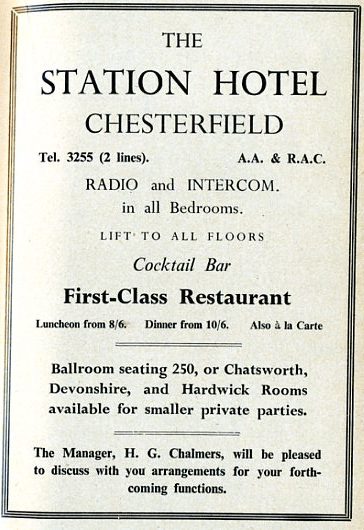
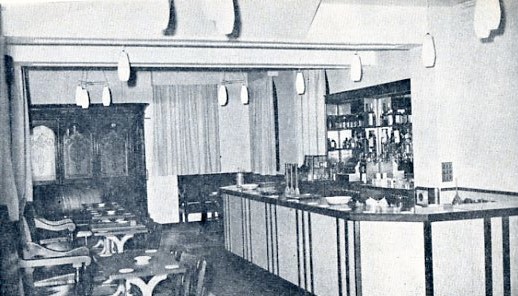
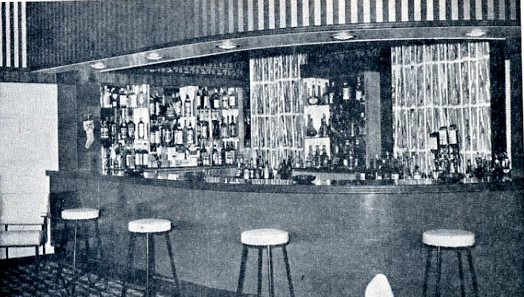
And the future?
Our brief look at the end of 1962 is at an end. What was in store for 1963?
Well, a very bad winter for starters. But, unfortunately, TP Wood’s Almanac would no longer be able to chronicle the following period up to Christmas 1963. It ceased publication with a last Almanac for 1964. This was actually published, like its predecessors at the end of the proceeding year – in this case 1963. Due to printing requirements the popular ‘local chronical ‘ stopped recording events in early November 1963, unfortunately never to return.
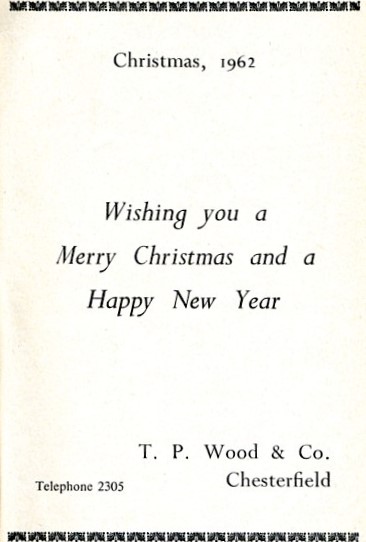
We’ve used John Hirst’s excellent Chesterfield Breweries book and various editions of TP Wood’s Almanac in this blog.
If you’d like to learn a little more about TP Wood’s Almanac follow the link here to a Derbyshire Victorian County History Trust blog on the subject.
